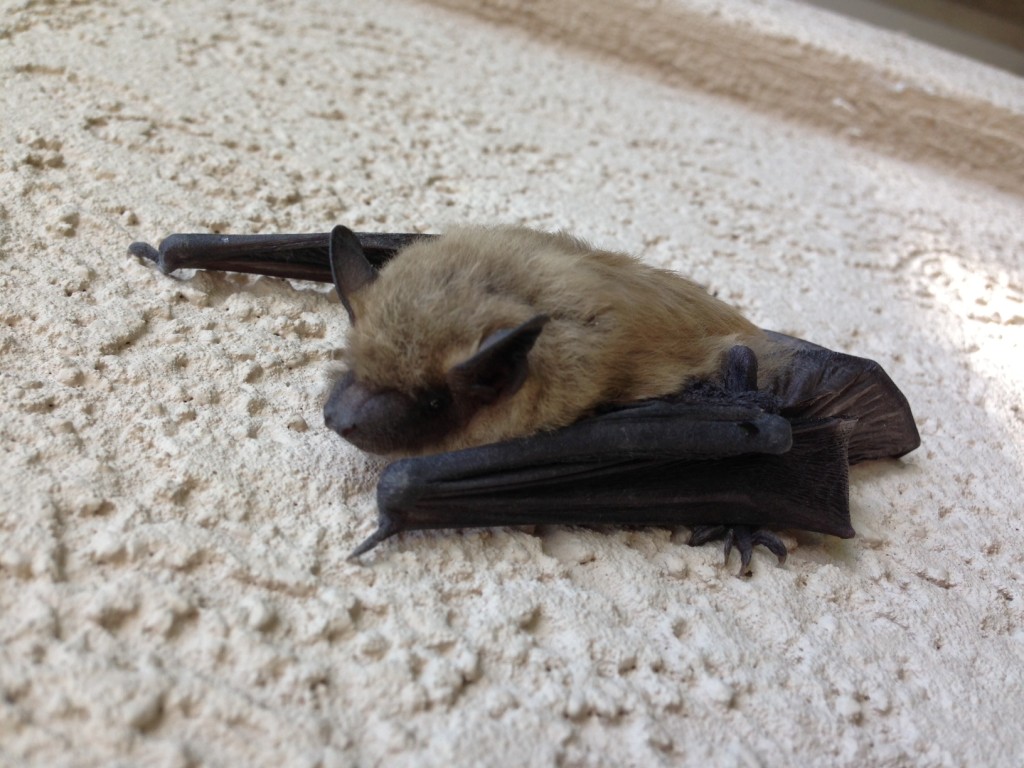BATS
 There are eighteen species of bats known in Colorado. Sixteen of these are in the family Vespertilionidae, or the so-called common bats, which has over 300 species. It is the largest family of bats in the world. Almost all members of this family are insect-eaters, and most those are also cave-dwellers. The other two species of bats in Colorado come from the Molossidae family, which has over 80 species worldwide, most of which are in tropical and subtropical regions. The tails of these bats extend further than the edge of the uropatagium, which is the rear end of the animal between the two hind limbs. That is why this family of bats is commonly called free-tailed bats. Some species have short, velvety hair and congregate in groups of millions.
There are eighteen species of bats known in Colorado. Sixteen of these are in the family Vespertilionidae, or the so-called common bats, which has over 300 species. It is the largest family of bats in the world. Almost all members of this family are insect-eaters, and most those are also cave-dwellers. The other two species of bats in Colorado come from the Molossidae family, which has over 80 species worldwide, most of which are in tropical and subtropical regions. The tails of these bats extend further than the edge of the uropatagium, which is the rear end of the animal between the two hind limbs. That is why this family of bats is commonly called free-tailed bats. Some species have short, velvety hair and congregate in groups of millions.
Some bats are not opposed to living in buildings and even homes. The most frequent human encounters with bats is their uninvited appearance in houses, usually entering through unscreened windows or chimneys. If noises in the attic or chimney are coming from bats, the best long-term solution is exclusion. To exclude bats from a structure, all holes must be located and sealed with siding, screen, or caulking. Bats are smaller than they may seem and can wiggle their bodies in anywhere their head will fit. This means that cracks as narrow as one-quarter inch will allow even medium sized bats in. Some of bats favorite ways to enter structures are through loose, warped or shrunk boards, through loose vents, eaves, cracks under loose flashing, spaces around water pipes and electrical wiring, beneath corrugated roofing, and around poor-fitting doors and windows.
Bats do help us keep our insect populations in check, but keeping them around also comes with some potentially dangerous risks. Some bats carry rabies. You should especially avoid grounded bats, or ones that will allow you to easily handle them, for these are most likely sick or injured and should be avoided by untrained people, as should all wild animals. If you find piles of mouse like fecal material in your attic or on the ground outside your house, then you probably have bats. Bat guano, or droppings, can carry a fungus known to cause Histoplasmosis, an infectious disease caught by inhaling the spores of the fungus. Do not breathe in the feces and avoid contact with them. You can distinguish between bat droppings and mouse droppings in two ways. First, bat droppings are generally clustered together, piled up below where the bat is roosting. The second way to distinguish them is, bat droppings have a shiny spotted appearance from all the insect wings they have digested, and will crumble when touched. Mouse droppings on the other hand, are generally scattered about and become hard when dry.
Critter Gitterz offers many ways to deal with bats, a lot of these ways do not involve an chemical impact on the enviroment. We can remove the bats and keep them out of most areas under 30′ without any harm to them. Please call or e-mail to crittergitterz@gmail.com for more information.
